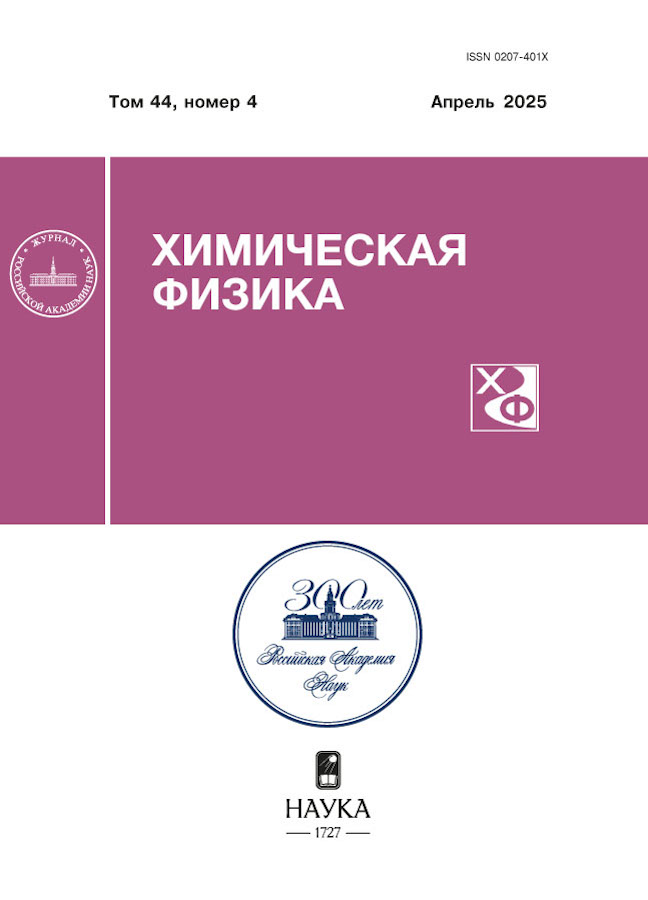Cylindrical cavity in a layer of solid explosives: dynamics of collaps on impact, critical conditions for explosion
- 作者: Dubovik A.V.1
-
隶属关系:
- Semenov Federal Research Center for Chemical Physics of the Russian Academy of Sciences
- 期: 卷 44, 编号 4 (2025)
- 页面: 46-53
- 栏目: Combustion, explosion and shock waves
- URL: https://rjraap.com/0207-401X/article/view/682725
- DOI: https://doi.org/10.31857/S0207401X25040052
- ID: 682725
如何引用文章
详细
A numerical and analytical solution has been carried out for the hydrodynamic problem of the collapse of a cylindrical cavity in a freely spreading layer of solid explosive upon impact. Based on the results of calculations of the conditions for the initiation of HMX-type explosive charges, the critical impact parameters, geometric and physical-mechanical characteristics of the layer and the properties of the gas cavity were determined. The dual role of gas in the cavity was established, in some cases facilitating or preventing the process of explosion occurrence.
全文:
作者简介
A. Dubovik
Semenov Federal Research Center for Chemical Physics of the Russian Academy of Sciences
编辑信件的主要联系方式.
Email: a-dubovik@mail.ru
俄罗斯联邦, Moscow
参考
- F.P. Bowden, A.F. Ioffe. Initiation and Growth of Explosion in Solids and Liquids (Cambridge University Press, 1952).
- N.A. Kholevo. Sensitivity of Explosives to Iimpact (Mashinostroenie, Moscow, 1974) [in Russian].
- K.K. Andreev, A.F. Belyaev. Theory of Explosives (Oborongiz, Moscow, 1960) [in Russian].
- G.T. Afanasyev, V.K Bobolev. Initiation of Solid Explosives by Impact (Nauka, Moscow, 1968) [in Russian].
- B.A. Khasainov, A.V. Attetkov, A.A. Borisov. Khimicheskaya Fizika 15(7), 103 (1996).
- E.I. Andriankin, V.K. Bobolev, A.V Dubovik. Applied Mechanics and Technical Physics, 6, 98 (1970).
- A.A. Ilyushin. Plasticity (OGIZ, Moscow, 1948) [in Russian].
- N.B.Vargaftik. Handbook on the Tthermophysical Properties of Gases and Liquids (Nauka, Moscow, 1972) [in Russian].
- L.M. Kachanov. Fundamentals of the Theory of Plasticity (Nauka, Moscow, 1969) [in Russian].
- G.I. Nazin, B.L. Korsunskiy, A.I. Karasev, A.V, Nabatova, N.G. Samoilenko. Russ. J. Phys. Chem. B 17(2), 406 (2023). https://doi.org/10.1134/S1990793123020124
- A.V. Dubovik. Russ. J. Phys. Chem. B 17(2), 369 (2023). https://doi.org/10.1134/S1990793123020057.
- V.N. Marshakov and V.G. Krupkin. Russ. J. Phys. Chem. B 17(2), 388 (2023). https://doi.org/10.1134/S1990793123020100
- A.V. Dubovik. Russ. J. Phys. Chem. B 16(2), 260 (2022). https://doi.org/10.1134/S1990793122020051
补充文件














